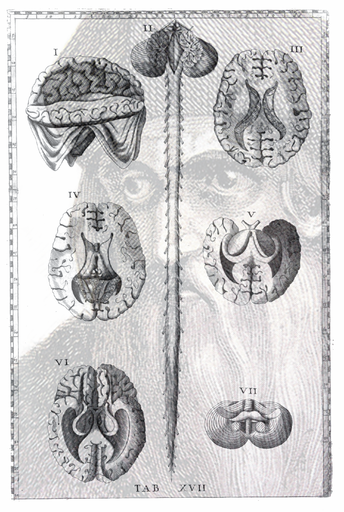Bartolomeo Eustachica. 1500–1574
Eustachi (or Eustachio) was renowned for his dissecting skill, but he was reluctant to publish all his plates representing the body and its parts during his life: he feared that testing the restrictions of the church on human dissection would result in his excommunication. He gained access to cadavers as a consequence of his academic position in Rome. The tables were published long after his death, and that with which his portrait is combined appeared in 1714 in his book Tabulæ Anatomicæ. There were 47 copper plate engravings or tables in all and those depicting the brain and spinal cord were tables 17 and 18. Only the first eight plates were printed during his lifetime, and the others were thought to have been lost. They had been given by Eustachi to the artist and collaborator, Pier Matteo Pini, and had remained in the Pini family until rediscovered in the early 18th century. The table showing the ear and its connections (published in his De Auditus Organis in 1562) has resulted in the survival of his name and fame – the Eustachian tube connects the middle ear to the pharynx. It has been said that advances in anatomy would have been hastened if the plates had been published during Eustachi’s life.
